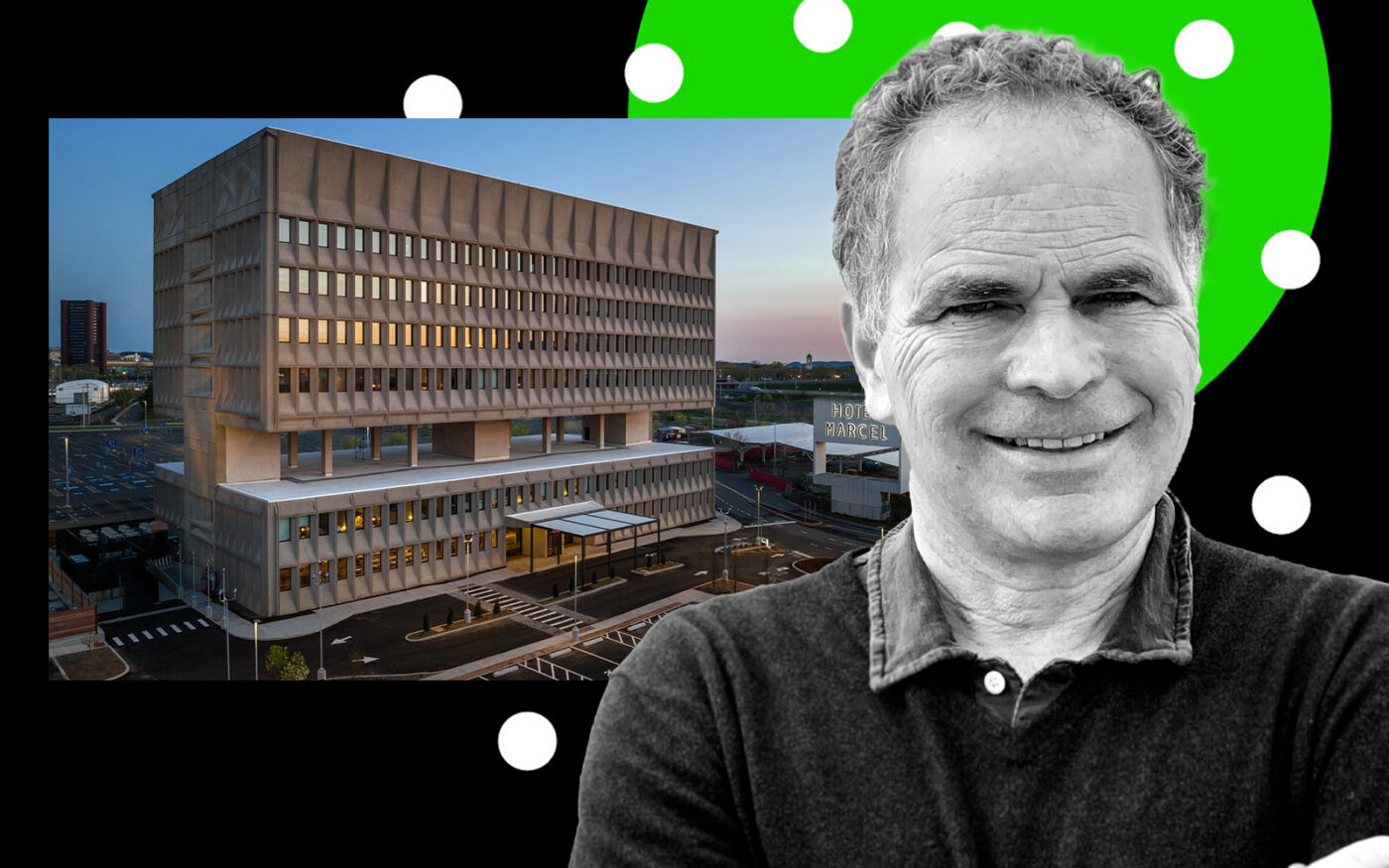Trending
“The cheaper way to go”: Bruce Becker talks zero-emissions New Haven hotel
Becker’s Hotel Marcel is America’s first Passive House-certified hotel

Bruce Becker thinks building green is just good business.
The principal of Becker + Becker helmed the conversion of New Haven’s iconic Pirelli Building to the sustainably designed Hotel Marcel, which became America’s first Passive House-certified hotel in September, according to published reports. The decision to reduce emissions and opt out of natural gas and diesel-dependent components of the building lowers the operating costs of running the hotel, and adds to the value of the building, he said in an interview with Yale Insights.
“We don’t have that larger energy bill to pay every year. We capitalize that and it makes the building worth millions of dollars more than it otherwise would be,” he said.
Becker bought the nine-story Brutalist building at 500 Sargent Drive in New Haven in 2020, according to published reports. It was designed by Marcel Breuer, an icon of modern design, protégé of Bauhaus founder Walter Gropius and the architect behind the original Whitney Museum on Madison Avenue, which is now occupied by the Frick.
Built as the headquarters for Armstrong Rubber Company, the tire firm Pirelli bought the building in 1988, according to CNN.
Following Becker’s conversion, the Hotel Marcel runs almost entirely on renewable energy. His Passive House redesign greatly reduced the hotel’s need for electricity, which he says makes the building better off than other comparable hotels.
“A typical hotel in New England spends $15.50 per occupied room night on energy,” Becker told Yale Insights. “We spend only about $5.”
That frees up cash to reinvest into the property and pay off financing, he said. Between the operational cost savings, Inflation Reduction Act tax credits for green building components and other public incentives for sustainable design, green makes more sense, according to Becker.
“This is actually the cheaper way to go,” he said.
–– Kate Hinsche




